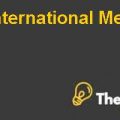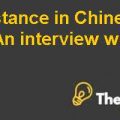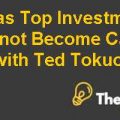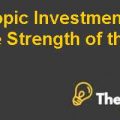
Questions
1) What are the driving forces behind BRL Hardy to become a global company?
2) What is the source of tension between Stephen Davies and Christopher Carson? How effectively has Steve Millar handled the differences?
3) What should the management of BRL Hardy do to ensure that its European unit's actions fit with the company's strategy to become a global wine company?
4) What are the specific factors that have contributed to the remarkable success of BRL Hardy following its merger?
5) Should Millar approve Carson’s proposal to launch D’istinto? Why/why not?
6) What action should Millar take regarding the competing proposals for Banrock Station and Kelly’s Revenge?
Question 1
The BRL Hardy is the result of the merger in 1992 of two opposing Australian companies named Thomas Hardy & Sons and BRL. Both companies believed that the merger would facilitate them to deal with their troubles as one large firm at the time when both companies were struggling financially. Even though both companies were following different strategies but this merger was the win situation for them. The Hardy firm had marketing expertise and winemaking know-how whereas BRL had access to fruit, funds and disciplined management. The success of the BRL Hardy can be credited to a large extent to the complementing opportunities of both companies.
The business of wine had few international companies in early times as the wine industry was very small and therefore few true global brands were available. This made BRL Hardy to think about increasing its production to numerous locations over the globe and become one of the world’s first global wine producing companies. Hardy was able to assemble the scale that was essential for creating strong brands and negotiating with retail stores by breaking the habit of producing and selling only its own wine.
BRLH won its first international gold medal at Bordeaux in 1882 This created goodwill of the company, which provided it an opportunity that more wine will sell if the company becomes a global company. In addition to this, the company was also the largest winemaker in Australia. The Australian wine was becoming a trend and the demand of the non-traditional markets from new customers grew rapidly. All this were driving forces for the company to become a global company.
Question 2
The major cause of the stress among Stephen Davies and Christopher Carson is from a quarrel concerning what type of strategy should be used in the market of U.K. Davies wanted to employ a global brand strategy but Carson supposed that it was hard to function in U.K.’s market. This seemed to be a problem that arose in a context of post-merger due to the reality that before the merger with BRL; Carson was primarily part of the Hardy Company and used to operate under the decentralized structure while his prior knowledge and achievements would be ignored after the acquisition as a result of the new management and he lost his autonomy in the UK by being obligatory to answer to Stephen Davies.
Another major factor that would be the reason for the conflict between Stephen Davies and Christopher Carson was that both the merged companies, Hardy and BRL took quite different approaches to sell wines. The hardy focused more on local approach and when deciding the positioning and labeling of the brand, it emphasized on the importance of the relations with the retailers whereas; BRL was more of a bulk oriented seller that emphasized on the importance of the brand name and controlling its position from their domestic market.
Most important part of jobs was attained by the employees of ex-BRL in BRL Hardy that led many employees of the Hardy feeling discouraged at BRL Hardy. Hardy employees had to really struggle hard to earn their preferred stripes. There was serious stress concerning centralization or decentralization between Davies and Carson. Carson had a belief that the labeling and pricing of the products should be prepared with the original regulators of the home market whereas; Davies had an idea of handing the issues of pricing, labeling and branding to the home management of Australia.
Steve Millar handled the condition efficiently as he noticeably acknowledged the expertise and the potential of the two managers of the company. In addition to this, his intention to get them working together was very good. Whereas, numerous management were made by the Steve Millar that did not improve the condition and even worsen it. The dual line reporting decision of Steve Millar was quit unclear as it was critical while considering the fact that Carson’s autonomy was still below Davies on the hierarchy while profit reports were directly submitted to the CEO, Steve Millar; he also had to consult ...............................
This is just a sample partial case solution. Please place the order on the website to order your own originally done case solution.













